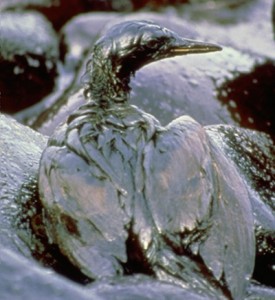A s the nation begins to appreciate the impact of the oil spill in the Gulf of Mexico and the Supreme Court prepares to wade in on the issue of patentable subject matter in Bilski v. Kappos, one can’t help but be reminded of the Diamond v. Chakrabarty, 447 U.S. 303 (1980) case. In that case the Supreme Court dealt with the scope of section 101 and whether a living organism constituted patentable subject matter. Dr. Chakrabarty’s invention dealt with an oil digesting bacteria that could digest about two-thirds of the hydrocarbons found in a typical oil spill. With its landmark decision, the Supreme Court declared Dr. Chakrabarty’s invention patentable. That bacteria would later be used to remediate the oil spill from the Exxon Valdez and presumably will be used on the oil spill in the Gulf, as well.
s the nation begins to appreciate the impact of the oil spill in the Gulf of Mexico and the Supreme Court prepares to wade in on the issue of patentable subject matter in Bilski v. Kappos, one can’t help but be reminded of the Diamond v. Chakrabarty, 447 U.S. 303 (1980) case. In that case the Supreme Court dealt with the scope of section 101 and whether a living organism constituted patentable subject matter. Dr. Chakrabarty’s invention dealt with an oil digesting bacteria that could digest about two-thirds of the hydrocarbons found in a typical oil spill. With its landmark decision, the Supreme Court declared Dr. Chakrabarty’s invention patentable. That bacteria would later be used to remediate the oil spill from the Exxon Valdez and presumably will be used on the oil spill in the Gulf, as well.
Dr. Chakrabarty’s invention and the Diamond v. Chakarabarty decision underscore the benefits of an expansive interpretation of 35 U.S.C. §101 — an interpretation that encourages innovation and promotes the disclosure of new ideas.
You can listen to the oral argument in Diamond v. Chakrabarty here: [Listen].
You can read the Court’s opinion here: [Read].